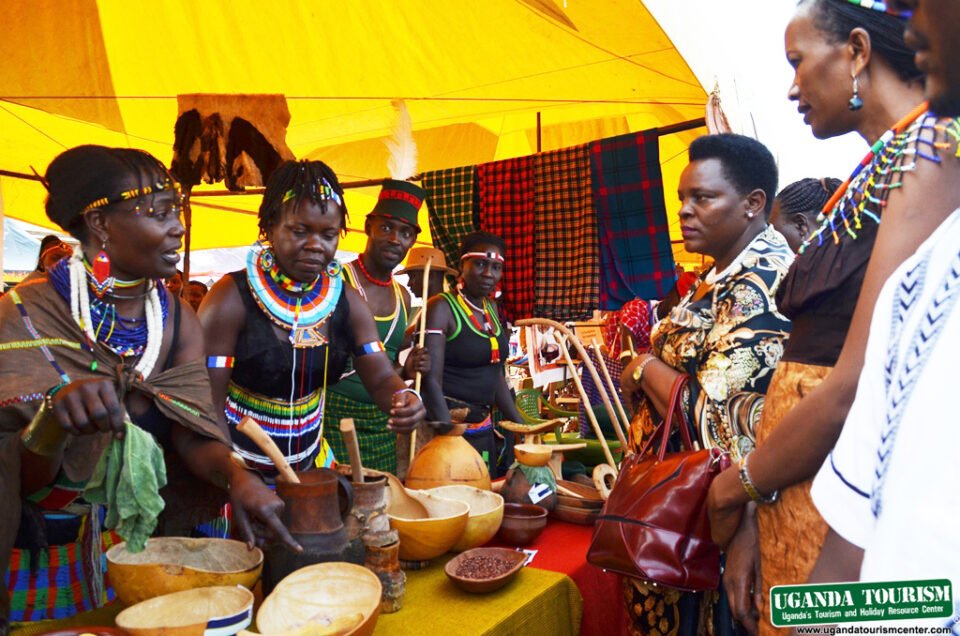Uganda’s culture is deeply rooted in the traditions of its various ethnic groups, which are broadly divided into Bantu speakers in the south and west and Nilotic speakers in the north and east.
- The Baganda: As the largest ethnic group, the Baganda have a significant influence on Uganda’s culture. Their kingdom, Buganda, is led by the Kabaka (king), a revered figure. Traditional attire includes the gomesi for women, a long, elegant dress with pointed shoulders, and the kanzu for men, a white or cream-colored robe.
- The Banyankole: From southwestern Uganda, this group is traditionally known for their Bahima (pastoralists) and Bairu (agriculturalists). Their culture and dances often pay homage to their cherished long-horned cattle.
- The Acholi: In northern Uganda, the Acholi are famous for their lively music and dances, such as the Larakaraka, a courtship dance. Their traditions are passed down through storytelling and music.
- The Basoga: Located in eastern Uganda, the Basoga are known for their community-oriented ceremonies and music. Their Bwola dance is a ceremonial performance with graceful, rhythmic movements.
Cuisine: A Taste of Uganda
Ugandan cuisine is a blend of local flavors with influences from British, Indian, and Arab cultures. The food is typically not very spicy, relying instead on fresh ingredients and simple cooking methods.
- Matooke: This is arguably the national dish. It’s made from green bananas that are peeled, wrapped in banana leaves, and steamed until soft. It’s often mashed and served with stews, especially rich groundnut (peanut) sauce or meat stews.
- Luwombo: A special delicacy from the Baganda, luwombo is a stew of chicken, beef, or fish that’s wrapped and steamed in banana leaves. This slow cooking method infuses the food with a unique, earthy flavor.
- Rolex: A popular and affordable street food. It has nothing to do with the watch brand; the name is a playful blend of “rolled eggs.” It’s a chapati (flatbread) rolled around a fried egg omelette with cabbage, onions, and tomatoes.
- Posho: A common staple food, posho is a thick, dough-like porridge made from maize flour. It’s often served with stews and is very filling.
Traditions and Social Etiquette
Ugandan society is built on a strong foundation of hospitality, respect, and community.
- Hospitality: Offering food and drinks to guests is a deeply ingrained custom, symbolizing warmth and generosity. It’s considered a sign of goodwill to share a meal with visitors.
- Respect for Elders: Showing deference to elders is a fundamental aspect of Ugandan culture. Younger people are expected to use respectful language and gestures when interacting with their elders.
- Greetings: Shaking hands is the normal way to greet someone. In some parts of the country, it’s common to use both hands to shake as a sign of respect.

